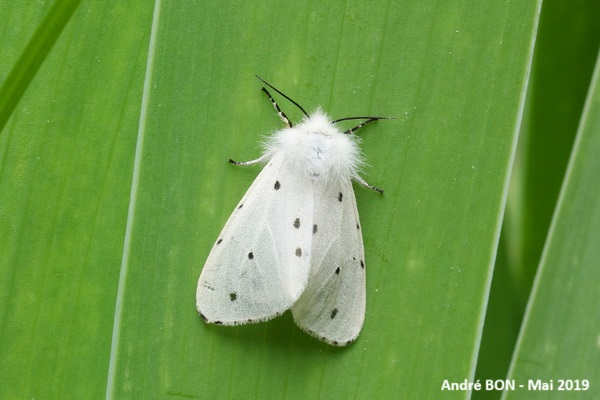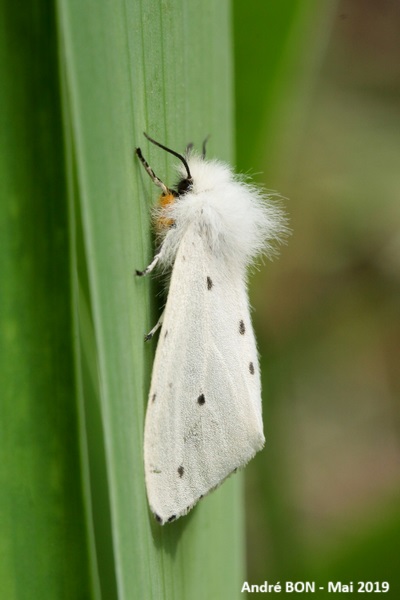

| Muslim Moth (Diaphora mendica (Clerck, 1759)) |


|
|
Scientific name: Diaphora mendica (Clerck, 1759) Common name: Muslim Moth French name: Écaille mendiante Order: Lepidoptera Suborder: Heterocera Family: Erebidae Subfamily: Arctiinae Wingspan: 28-38 mm. Males are slightly smaller than females. Biotope: Very varied environments, from forests to urbanized areas. Geographic area: Europe except northern regions and Corsica, Asia east to Lake Baikal. Flight time: March to June. Number of generations : 1 Caterpillar: Blackish with a thin light dorsal line. Many dark warts have tufts of red or yellowish-brown bristles. The head is light brown. Host plant: Many low growing plants. |
The Muslim Moth exhibits significant sexual dimorphism. The male is grey-brown and the female is white. Both sexes are spotted with a few small black dots. The back of the head has a large, fluffy ruff. Males have the hind wings of the same colour as the front but without dots. Females have white hindwings with some greyish spots. Males have pectinate antennae. There are variants with males much lighter in colour and females with more numerous and elongated spots. The White Ermine (Spilosoma lubricipeda) has many more black spots on the forewings. |
| [To know more about the Muslim Moth] [Next picture] [Top] |

|
This female Muslim Moth knows that I am interested in butterflies and moths and it came so that I shoot its photo in my garden. I'm waiting for a male to pass by now. |
| [To know more about the Muslim Moth] [Previous picture] [Top] |

|
Side view. |